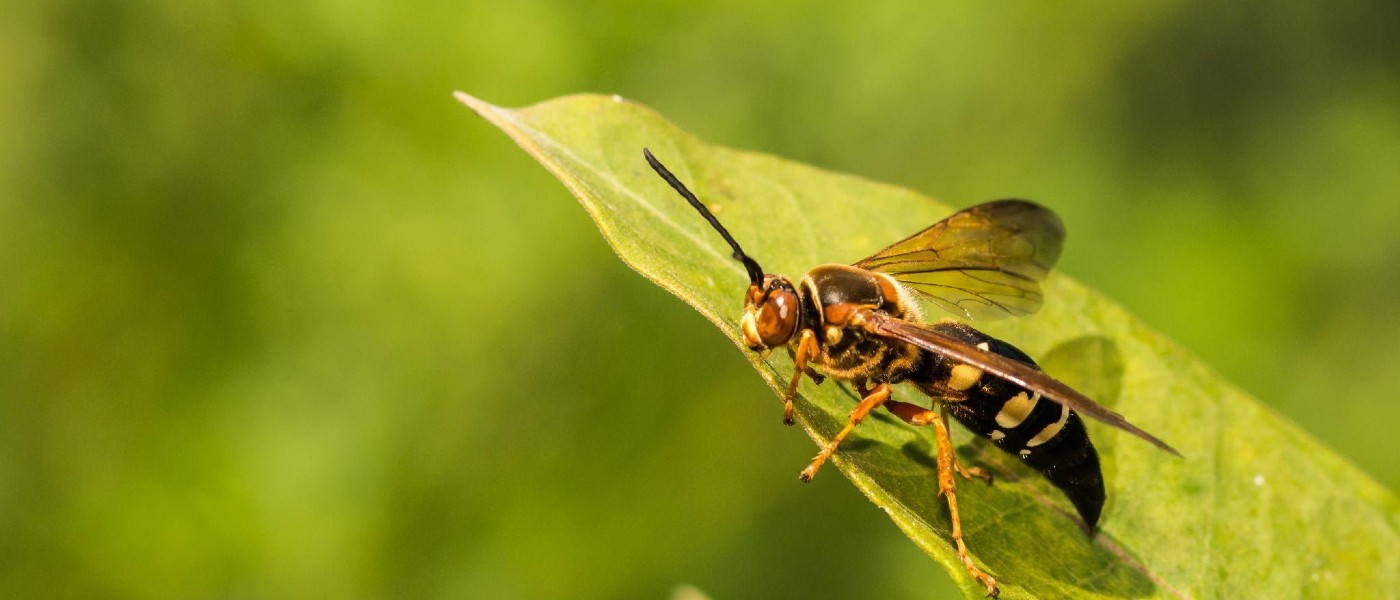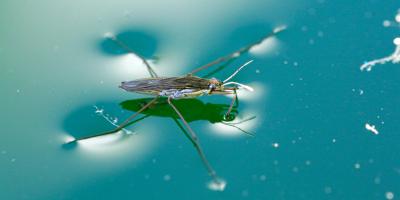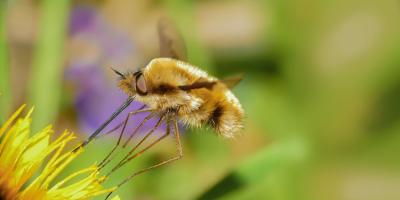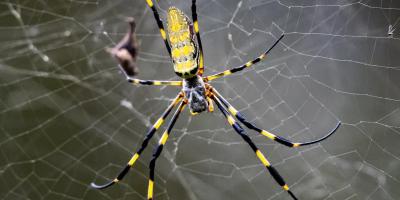Everything You Didn't Want to Know About Cicada Killers

They’re huge. They’re horrifying. But unless you’re a cicada, they’re actually pretty harmless. We’re talking about cicada killers -- those big, ugly wasps that tend to appear towards the end of summer that, despite having a name pulled straight from a horror novel, aren’t nearly as menacing as they appear.
Unless -- and, again, this can’t be stressed enough -- unless you’re a cicada.
Because, for those harmless, bug-eyed buzzers that spend most of their lives underground, cicada killers are a nightmare straight out of a Stephen King story.
Don’t Confuse Cicada Killers for Murder Hornets
In 2019 and 2020, the US discovery of an aggressive, two-inch-long species of wasp known as murder hornets has put amateur etomolgists across the country on high alert. Don’t worry -- so far, murder hornets are confined to the Pacific Northwest. But that hasn’t stopped people from misidentifying local wasps -- especially cicada killers -- as murder hornets.
Like murder hornets, cicada killers are big and colorful. The major difference being that murder hornets are responsible for a string of human deaths, whereas cicada killers are almost completely harmess to humans.
For one, most of the cicada killers you’re likely to encounter are males, which are incapable of stinging. However, even females of the species will rarely sting unless mishandled.
Cicada Killer Offspring Are the Real Monster
If this were a horror movie script, now’s the part where the monster would show up. Here’s how cicada killers earn their name:
The hunt begins when a fertile female cicada killer heads up to the trees in search of her first victim. Using her sense of vision (as opposed to sound, for example), the soon-to-be momma cicada killer finds a cicada among the branches and attacks, stinging the unwitting insect and injecting it with a fast-acting venom that paralyzes it.
Next, the wasp lugs the cicada, between her legs, back to the underground nest she’d prepared for just this purpose. She then lays an egg on her zombified prey, which will serve as a food source for the growing larvae.
One immobilized cicada is enough to feed a single male offspring, but females need two cicadas. So the expecting wasp heads back out, continuing to stun and kidnap cicadas and bring them back to her self-made catacombs, sealing off each chamber after she lays an egg.
In a successful year, a female cicada killer might create and fill more than a dozen such chambers, stuffing them with upwards of 30 paralyzed cicadas.
What happens next is truly gruesome: As the eggs hatch, the cicada killer larvae emerge and begin to devour the still-unmoving cicada while it’s still alive.
After about two weeks of feeding, the larvae will spin a cocoon in the chamber, where they’ll remain throughout the winter. They won’t emerge again until the next summer, when the hunt for more cicada victims starts anew.
Solitary Killers That Are Seldom Troublesome to Humans
While cicada killer wasps are solitary hunters, collectively that can pose a moderate risk to lawns and yards. In spite of this, for the most part, their benefits to the local ecosystem typically outweigh the very minor damage they might cause. For the most part, pest control is not needed to combat them.
However, even though cicada killers pose no real threat to humans, the same cannot be said of other species of wasps -- and that is where the pest control professionals like us come in. Our pros can recognize the difference between a benign species like cicada killers and their potentially harmful cousins.
Not sure whether you’re dealing with a harmless cicada killer or something more sinister? Send a photo to Dr. Gary, our resident entomologist, and he’ll ID your pest free of charge.



